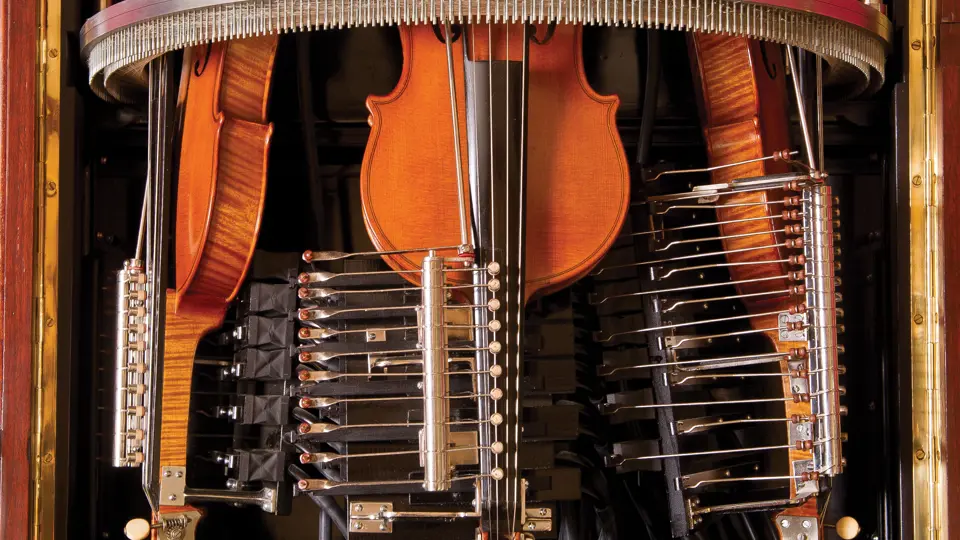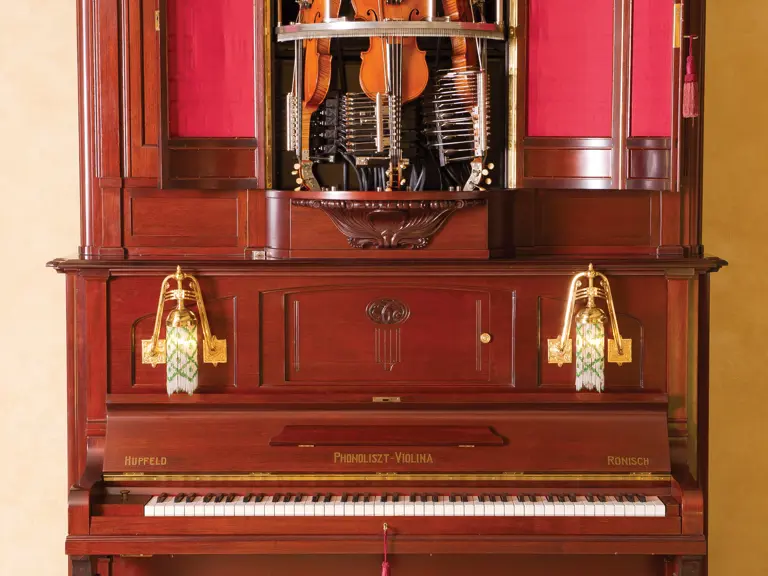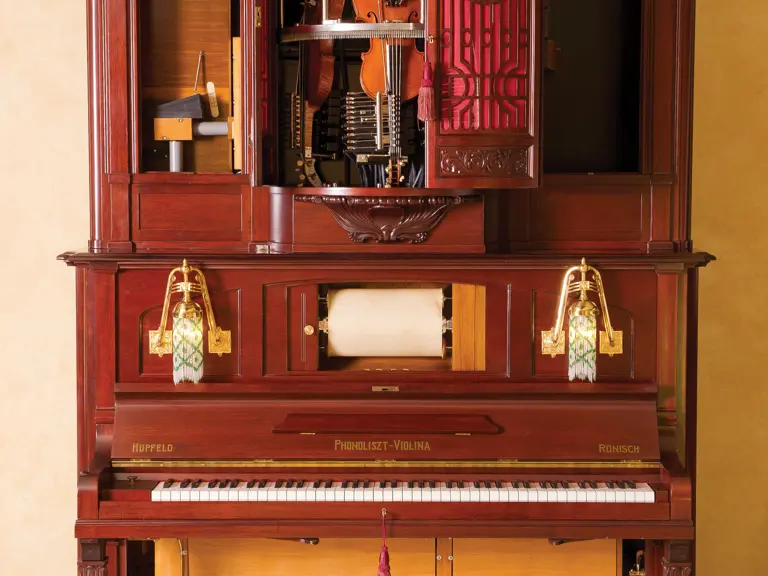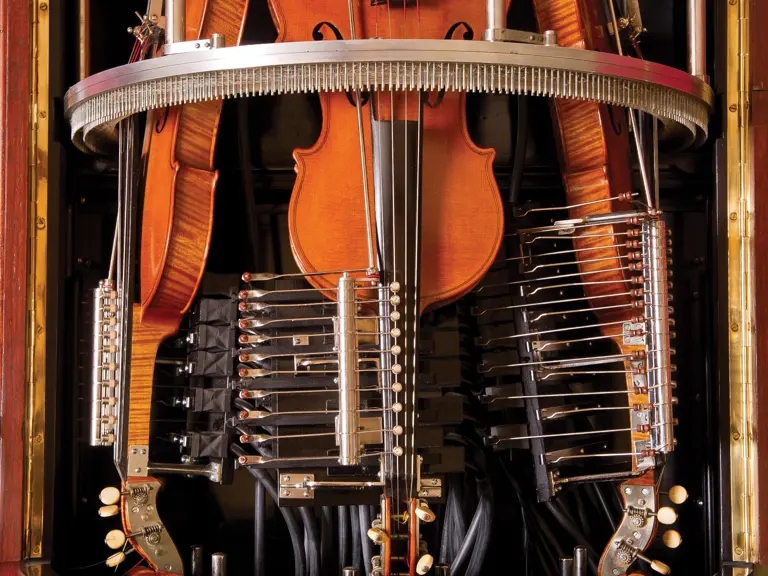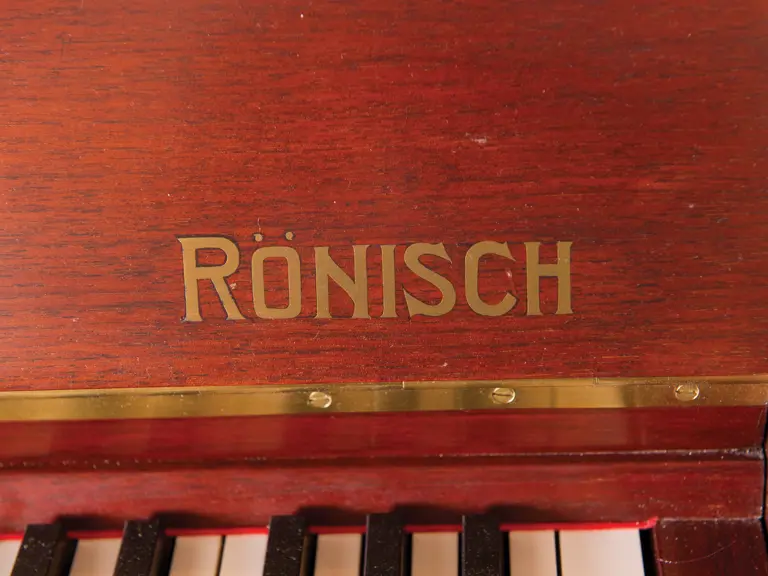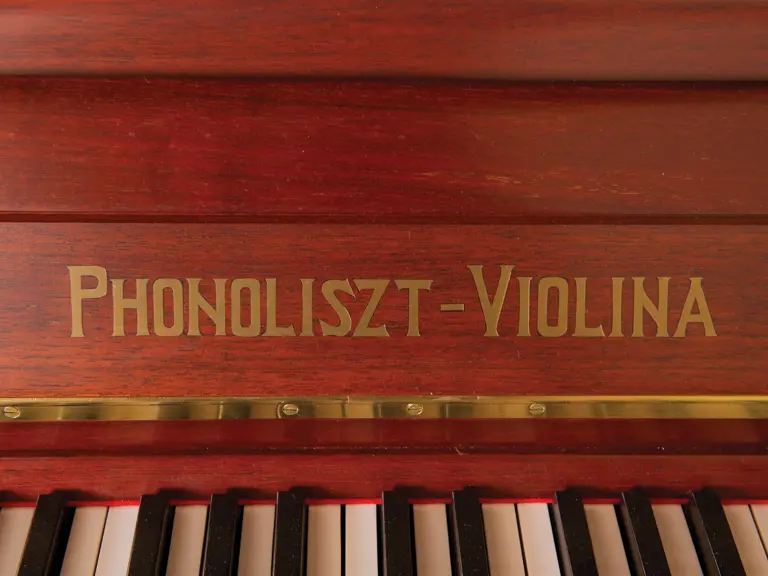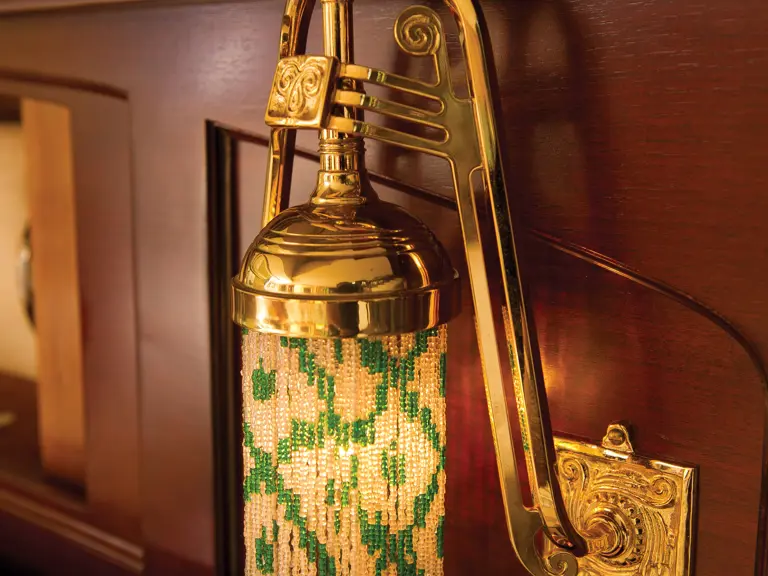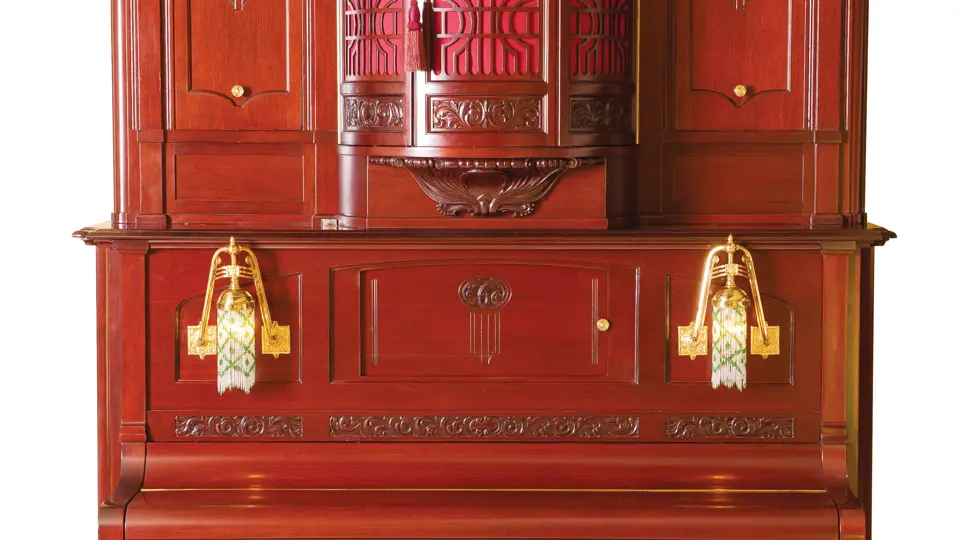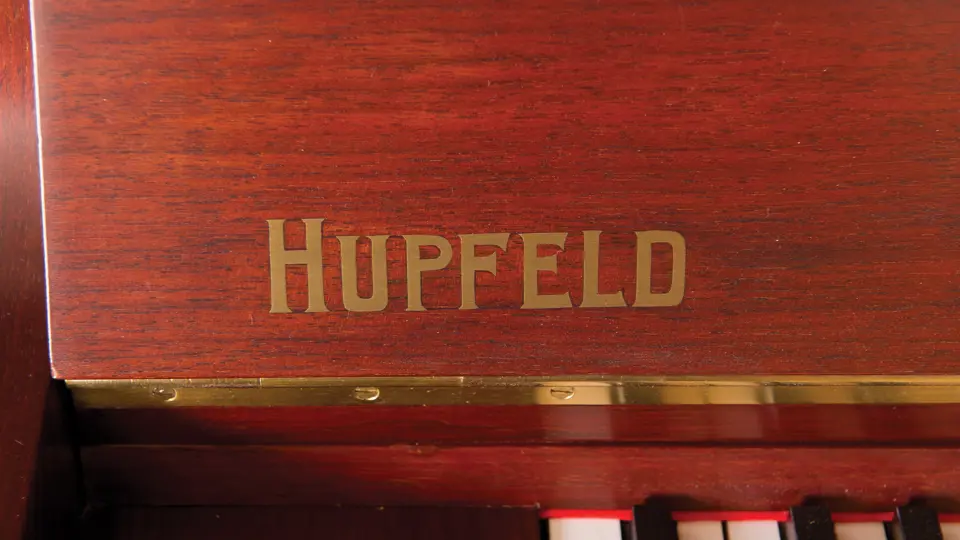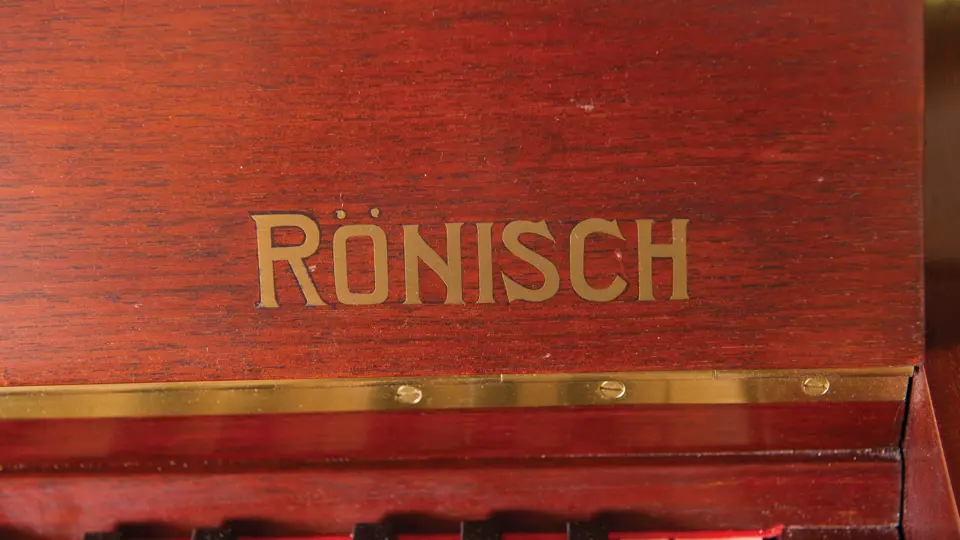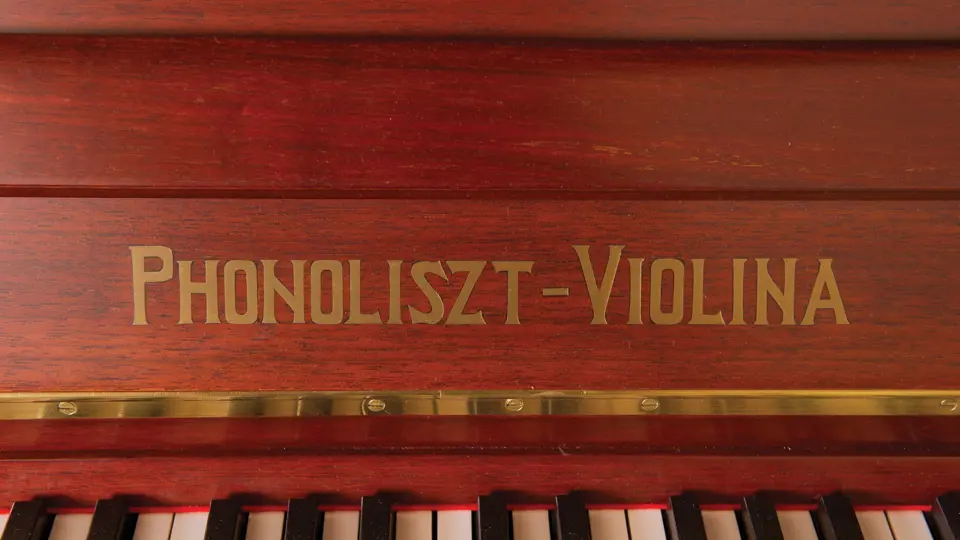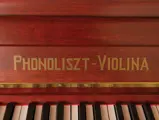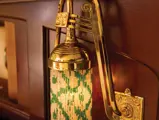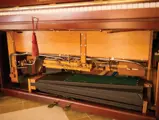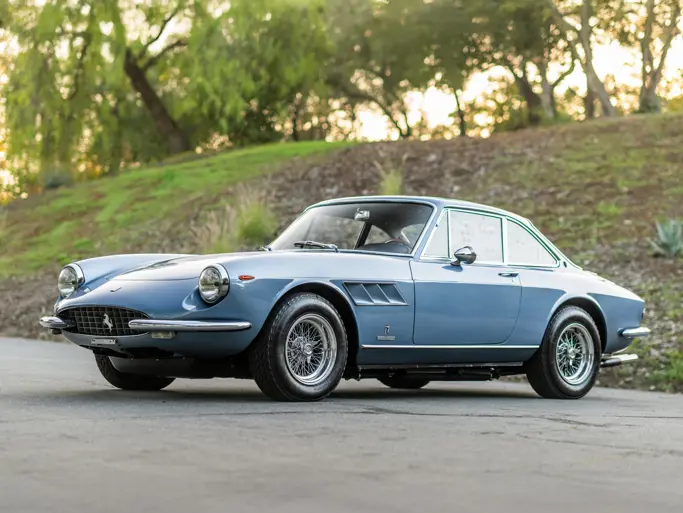 | Boca Raton, Florida
| Boca Raton, Florida
Ludwig Hupfeld AG (Böhlitz-Ehrenberg, Germany)
This is a beautiful example of one of the most acclaimed of all automatic musical instruments, the Hupfeld Phonoliszt-Violina. Introduced in 1908, it quickly became a worldwide sensation. A piano is housed in a lovely cabinet that plays with human-like expression and is accompanied by music from three violins, each with an active string.
Ludwig Hupfeld AG near Leipzig was one of only two companies that ever successfully developed and marketed machines that play the violin successfully, the other being Mills Novelty Co. of Chicago. Hupfeld's realistic-sounding and visually fascinating instrument was the Phonoliszt-Violina as offered here, one of two in the Milhous Collection. The present example, acquired from the renowned Fischer Collection in Burg Linz am Rhein, Germany, was subsequently restored by the Wendel's Mechanische Musikwerke Manufactur GmbH in Rüdesheim, Germany. Beautifully presented in a wonderful style B mahogany case, it plays magnificently and includes over 25 original and re-cut Phonoliszt-Violina rolls, plus a selection of Phonoliszt piano rolls.
The instrumentation includes a high quality Rönisch piano and three real violins, as noted above, all playing with lifelike expression from sophisticated pneumatic mechanisms and a multispeed rotating bow with 1,344 meticulously hand-tied strands of horsehair. It plays two types of rolls: Phonoliszt-Violina rolls, a supply of which are included, and Phonoliszt expression piano rolls that play the piano only. This is the only known Phonoliszt-Violina having violins bearing Dea labels, implying that they were originally made for use in a larger Hupfeld Dea-Violina, no other example of which exists today. 68x94x38 inches.


